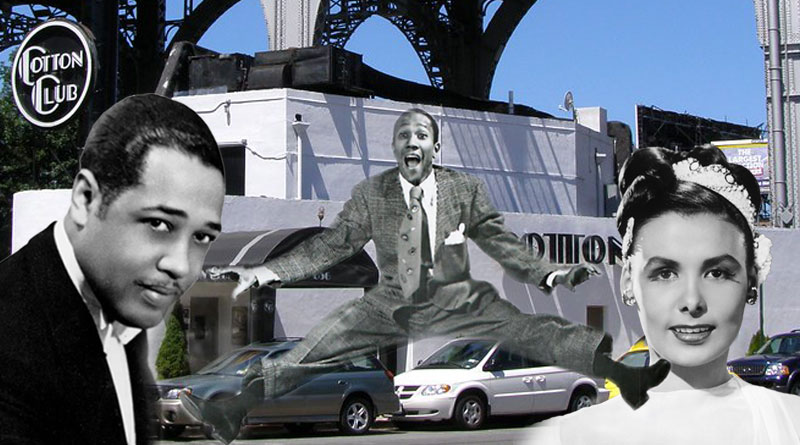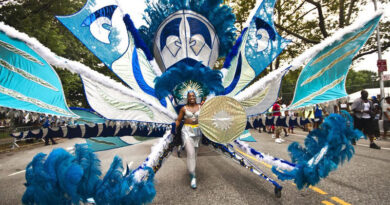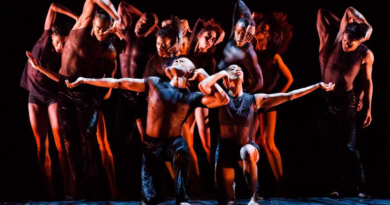The Cotton Club Celebrates 46 Years of Music

BY AUSTIN FENNER
Under the guidance of nightlife impresario John Beatty, The Cotton Club is celebrating an incredible 46 years in Harlem. The original Cotton Club at 142nd Street and Lenox Avenue opened in 1923 during the Prohibition Era (1923–1935). Crowds (white’s only) flocked to the glamorous uptown venue to experience the legendary speakeasy owned by gangsters. Black waiters and entertainers added panache. Shows featured the jazz music of Duke Ellington, Louis Armstrong, Fats Waller, Count Basie, Bessie Smith, the Dandridge Sisters, Ethel Waters, and Avon Long. Lena Horne, the iconic singer and actress, got her start in show business as a member of the famous female Cotton Club dancers. After a brief stint downtown, the club closed in 1940.
Thirty-seven years later, in 1977, John Beatty opened the latest incarnation of the venue as The Cotton Club at 656 W. 125th Street, A one-story Mediterranean style structure ensconced on a triangular island at 12th Avenue, it continues to be the spot in New York City for big band jazz and swing.
“It feels great to carry on the legacy of The Cotton Club and keep jazz music alive. It’s an honor.“ said Beatty. “We need to keep our music alive. If I don’t do it, who is going to do it? Most of my business is tourism,” he explained. Prior to the pandemic, on any given night busses pulled up and excited customers piled off ready to enjoy the show. The 6 foot 4 inch entrepreneur said the pandemic was a near fatal blow for the club. “They are just not coming like they used to.” He has weathered the economic fallout, however, and is moving forward looking at more opportunities in franchising and exploring bringing the mystique of the iconic brand to Las Vegas; Miami; and Havana, Cuba. The Tokyo Japan club, a franchise he sold there in 2005, still thrives in the land of the rising sun.
As a young man Beatty earned his keep laying bricks for $3 an hour. He used his skills to help lay the foundation for famous residential structures such as Esplanade Gardens in Harlem and other famous New York City buildings. Beatty also chased the good times as a bar crawler. Eventually he saved his nickels to open up his first bar called the Hamilton lounge in Harlem. His business sense runs in his DNA. He credits his early success to some old fashion wisdom given to him by his grandmother, Josie Richardson to own property. He learned discipline and hard work from his grandfather, Eliot Richardson, who owned 200 acres in South Carolina during the early part of the 20th Century.
Beatty points out Harlem’s gentrification and new business developments causing the demise of many Harlem businesses.He laments that there are only a few native business owners left to share the spotlight as this new uptown renaissance takes shape. Never the less, The Cotton Club experience showcases a dynamic culture that is heartfelt and loved by all who attend. One band member who has been a part of the Cotton Club tradition is John David Simon. “I love the muscians and the atmosphere and the band adds to the experience, ” he said. Lead alto saxophonist at the Cotton Club for more than a dozen years, Simon added, “The music is a great tradition —jazz and big band music. It’s timeless.
Tenor saxophonist Omar Daniels echoed those sentiments. “When people start dancing, we feel the connection,” said Daniels.
More than music, The Cotton Club is a true supper club, serving complete meals with a nod to Luisianna creole flavors delights. On a typical night, a 14-piece band clad in black tuxedoes performs hot jazz numbers; dancers twirl and tap to the melodic baselines and syncopated rhythms and the mystic energy of The Cotton Club fills the room.
With no signs of retiring or selling the business, he is grooming his grandsons to keep The Cotton Club in the family, said the 86-year-old Beatty. “The Cotton Club keeps me young. It keeps me going.”


